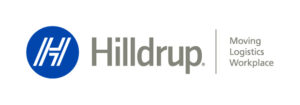The University of Mary Washington faces “several viability risks,” but also has positive trends working in its favor, according to a recent report from the Joint Legislative Audit and Review Commission (JLARC).
The JLARC report, entitled: “Higher Education Institutional Viability,” assessed Virginia’s 15 four-year public colleges and universities based on revenue trends and other factors.
Eight institutions — George Mason University, Virginia Tech, William & Mary, JMU, ODU, UVA, and VMI — were found to have “very low viability risk,” meaning no action from the state needs to be taken. The remaining seven institutions — including UMW — were found to have either “relatively low or some viability risk” and could require periodic oversight.
Four — Christopher Newport, Longwood, Norfolk State and the University of Virginia’s college at Wise — were rated as relatively low risk. UMW, Radford and Virginia State were listed as institutions with “some viability risk,” and have developed plans or initiatives to address areas of concern.
No institution was found to have high viability risk, a rating that would indicate the imminent risk of closure or merger with another institution.
According to the report, UMW’s enrollment has declined 20% over the past decade, posing additional challenges when it comes to generating revenue.
In a Sept. 18 response to three members of the commission, UMW President Dr. Troy Paino wrote that “it is important to understand UMW’s current enrollment in the context of a pre-pandemic strategic enrollment plan.”
UMW, according to Paino, has in recent years prioritized its undergraduate experience including partnerships with larger schools for degree pathways over growing enrollment. He noted that UMW’s four-year enrollment is the same as 25 years ago, when “by many measures, Mary Washington College was at its zenith,” he wrote.
“Higher-than-expected” graduation rates are another positive indicator, the report found.
Citing a private consultant, the report found that UMW’s facilities “require substantial maintenance, repair or renovation.”
On that topic, Paino wrote that the university has invested approximately $10 million of institutional funds on maintenance projects in recent years, work that isn’t factored into the JLARC report.
The report also states that UMW’s debt levels “have been relatively high, primarily from having to absorb the financial impact of its foundation making poor investment decisions.”
Paino addressed some of those decisions, including past public-private partnerships to finance real estate around the school’s Fredericksburg campus. He noted that UMW has “initiated two key purchases of Foundation-owned property, which should lead to the elimination of its privately-held debt.”
Paino wrote that improving competitive pricing for out-of-state students, examining regulatory practices and supporting institutions in meeting changing workplace needs could all lead to improved viability — at UMW and across the state.
“UMW looks forward to working with the General Assembly toward these goals,” Paino wrote.



















